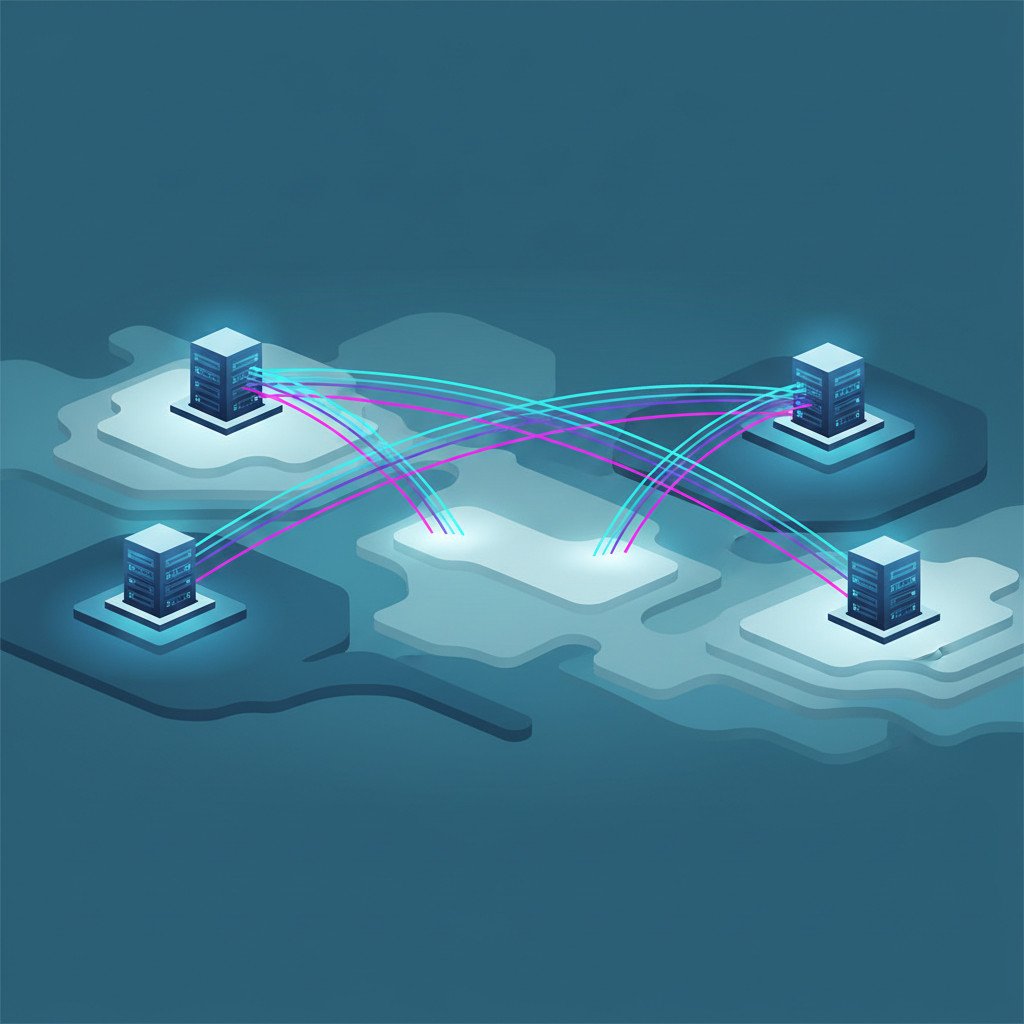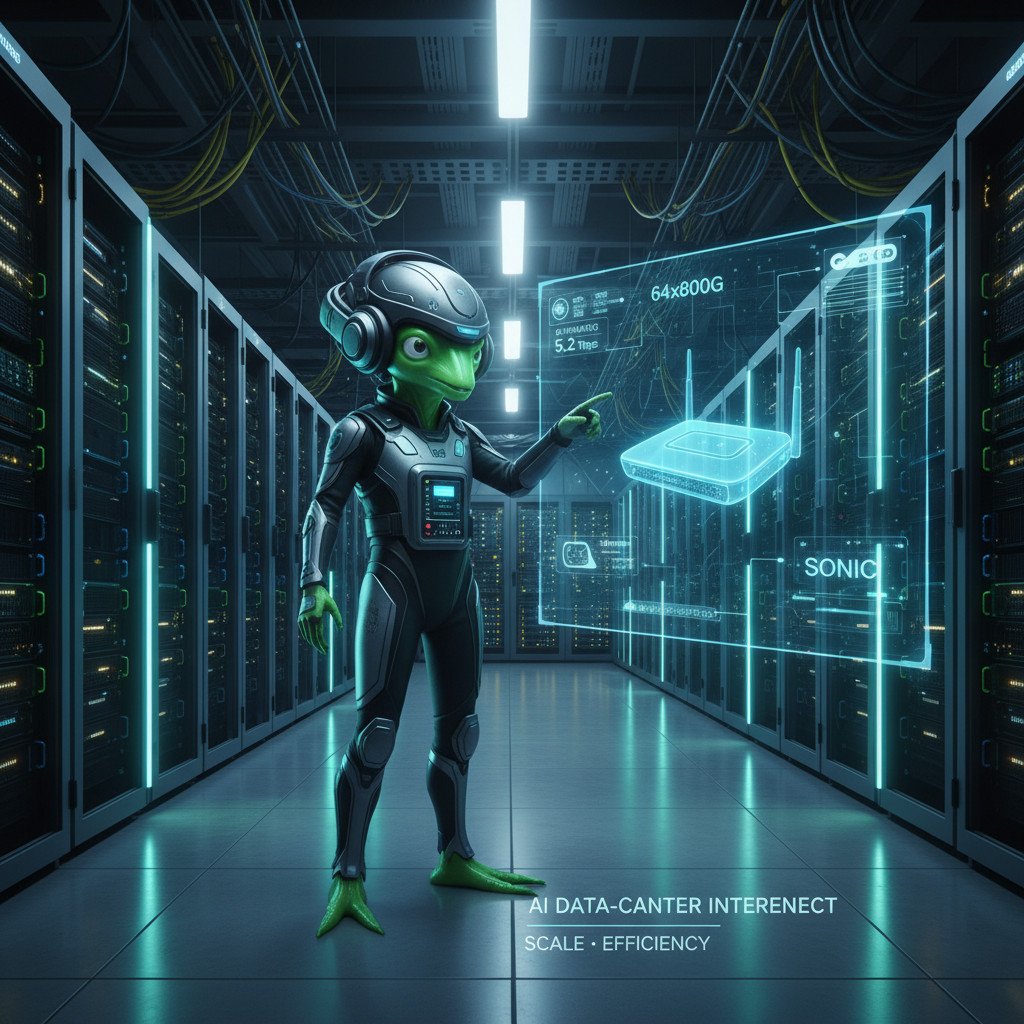AI data centre interconnect: why it matters now
AI data centre interconnect sits at the heart of modern AI infrastructure, linking distributed GPU farms, object stores, and model parameter servers across cities and regions to stream training data, exchange gradients, and enable federation in real time. As AI models scale, traffic volumes and latency demands explode, so reliable high-bandwidth, low-latency interconnects are critical for efficient training, timely inference, and cost-effective scaling.
This article will explain how new routers, like fixed 51.2 Tbps designs and Silicon One based platforms, and coherent optics reduce bottlenecks, while deep buffering and 800G ports smooth microbursts and long-haul links, and post-quantum encryption protects data in transit.
You will get practical insights on capacity planning, vendor trade offs, open standards, and observability strategies that IT leaders need to evaluate before large scale rollouts. By the end, you will understand whether emerging solutions can deliver the scale, performance, and resilience modern AI workloads demand and what trade offs matter most.
AI data centre interconnect: critical link for scaled AI workloads
AI data centre interconnect enables distributed training, model parallelism, and real time data exchange across sites. Because AI training splits work across hundreds or thousands of GPUs, networks must deliver huge sustained bandwidth. In addition, low latency matters for synchronous gradient updates and parameter server consistency. If latency climbs, training stalls and efficiency drops, which increases cost.
High throughput alone is not enough. AI workloads produce microbursts and large object transfers, therefore systems need deep buffering and coherent optics to smooth traffic. As a result, long haul links up to 1,000 kilometres must keep throughput predictable. That need drives designs that support many 800 gigabit ports and large per flow buffers.
Interconnects also handle data sharing for datasets, model checkpoints, and inference pipelines. Thus, they must combine encryption, observability, and programmable control planes to secure and tune flows. For examples of recent hardware aimed at these problems, see coverage of Cisco’s 8223 platform and the P200 chip here and here. For vendor details and the original product announcements refer to Cisco’s newsroom for technical specifications.
AI data centre interconnect: key technologies powering scale
AI data centre interconnect depends on several layered technologies that together deliver bandwidth, low latency, and resilience. Because AI workloads push massive data and tight timing, networks must combine optics, forwarding silicon, and smarter protocols.
- Low latency optical fiber links and coherent optics. These links lower propagation delay and support long haul spans up to 1,000 kilometres. Additionally, 800 gigabit coherent optics keep throughput high over long distances.
- High performance switching and routing silicon. Modern ASICs sustain billions of packets per second and terabits of throughput. For examples of recent fixed router designs and P200 silicon, see this deep dive and this product analysis.
- Large numbers of high speed ports. Systems with many 800G ports enable parallel flows and higher aggregate throughput. Therefore they reduce congestion across east west and regional links.
- Deep buffering and memory hierarchies. Buffers absorb microbursts from GPU clusters and smooth transfers. As a result, packet loss falls and training efficiency improves.
- Protocols and congestion control. Technologies like RoCE, DCQCN, and lossless Ethernet matter for RDMA and synchronous training. They minimize jitter and retransmits.
- Programmability, security, and telemetry. Open OS and SDN let operators tune paths, while line rate encryption and observability secure and measure flows.
Together, these technologies form the backbone for scalable, secure, and predictable AI data centre interconnects.

Benefits of AI data centre interconnect for businesses
AI data centre interconnect delivers concrete business advantages by moving large datasets quickly and reliably. Because models need massive inputs and frequent checkpoints, faster transfers cut training time and lower cloud bills. For example, a retailer can update recommendation models hourly instead of daily, improving conversion rates and customer experience.
- Faster data transfer and reduced operational cost. High aggregate throughput moves terabytes between sites in minutes, therefore teams finish experiments quicker and iterate more. As a result, time to market for AI features shortens.
- Lower latency and real time analytics. With predictable low latency, streaming analytics and fraud detection run in near real time. For instance, banks can flag suspicious transactions within seconds, not minutes.
- Scalability and elastic bursting. Interconnects enable seamless scaling across regions and clouds, therefore compute capacity can expand without data duplication. This supports seasonal demand and large batch training.
- Improved reliability and disaster recovery. Redundant long haul links and coherent optics keep pipelines available during failures, which protects SLAs and customer trust.
- Security and observability. Line rate encryption and deep telemetry secure data and help operators tune flows for peak performance. For hardware and design examples, see coverage of Cisco’s 8223 router and P200 silicon here and here.
Comparing traditional and AI data centre interconnect
The table compares legacy DCI with AI data centre interconnect across key dimensions.
| Feature | Traditional data centre interconnect | AI data centre interconnect |
|---|---|---|
| Latency | Higher and variable, tens to hundreds of milliseconds in WAN | Low and predictable, single-digit to low tens of milliseconds; optimized for synchronous training |
| Bandwidth | Moderate, focused on bursts and general traffic | Extremely high, aggregated terabits and many 800G ports to sustain GPU clusters |
| Scalability | Scales by adding capacity per site; often manual | Designed for scale-across, dynamic cross-site bursting and elastic expansion |
| Technology used | Standard optics, legacy routers, limited buffering | Coherent 800G optics, high-performance ASICs, deep buffering, RDMA support |
| Typical use cases | Web services, backups, and migrations | Distributed model training, real-time inference pipelines, federated learning |
Therefore, AI projects often require investment in specialized interconnects.
Challenges and considerations in AI data centre interconnect deployment
Deploying AI data centre interconnect raises technical and business hurdles. First, cost can be high. New routers, coherent optics, and dense fiber bring strong capital expense. In addition, operational costs rise because of power and cooling. Therefore finance teams must model total cost of ownership and ROI for reduced training time.
Key deployment challenges
- Cost and capital expense for optics and routers
- Complexity and skills gap in RDMA and optics
- Security and key management overhead for encryption
- Integration with legacy networks and vendor diversity
Second, complexity and skills gap slow rollouts. Teams need expertise in RDMA, congestion control, and optics. Moreover, integrating scale-across routing with legacy WANs requires network redesign and testing.
Security also demands attention. Line-rate encryption and post-quantum algorithms add processing and key management overhead. As a result, architects must balance throughput and cryptographic protection.
Integration challenges include legacy protocols and vendor diversity. Operators face fragmented OSes and limited interoperability. Consequently, open standards and programmable control planes reduce vendor lock-in and speed deployments.
Operational visibility and troubleshooting remain hard. Deep telemetry and observability tools help, but they add telemetry volume and storage needs. Physical constraints such as fiber routes and right-of-way also block some topologies.
Practical mitigations include phased migration, hybrid cloud bursting, and pilot deployments with clear KPIs. For vendor technical specs and observability integrations, see Cisco’s product announcements in the newsroom.

Future trends in AI data centre interconnect technology
The next wave of interconnect innovation centers on photonics and smarter control planes. Silicon photonics will shrink optics costs and raise port density. Moreover, co packaged optics will reduce power and latency by placing optics closer to ASICs. At the same time, coherent modulation advances will push long haul reach and spectral efficiency.
AI driven network management will automate operations. Closed loop telemetry and ML models will detect congestion, predict microbursts, and tune congestion control in real time. As a result, operators will reduce manual tuning and improve utilization. Programmable data planes, including P4, will let teams offload custom telemetry and in network compute for model aggregation.
Edge integration and 5G will expand the interconnect footprint. Consequently, distributed inference and private 5G slices will demand predictable cross site links and low latency. Hybrid cloud fabrics will therefore blend on prem, colo, and public clouds with unified control planes.
Security and standards will also evolve. Post quantum resilient encryption will become common, while open APIs will improve interoperability. Finally, optimism is warranted. These trends will make AI data centre interconnects faster, more efficient, and easier to operate. For IT leaders, the chance to design future ready fabrics starts now. Pilot early, measure KPIs, and build for scale across regions.
Emerging hardware will add deep HBM buffers and in packet processing to reduce loss. Moreover, optical circuit switching may complement packet fabrics for scheduled bulk transfers. Therefore operators can reserve bandwidth for critical jobs.
Conclusion
AI data centre interconnects are foundational for high scale AI. They unlock faster training, predictable inference, and robust data sharing. Because models grow in size and scope, networks must evolve to carry terabits with low latency and minimal loss. Therefore, organisations that invest in modern interconnects see shorter iteration cycles and lower operational cost.
EMP0 (Employee Number Zero, LLC) is a US based company that helps teams accelerate AI adoption. Moreover, EMP0 offers ready made automation tools and full stack AI capabilities that link data workflows to business outcomes. By combining AI powered growth systems with resilient interconnect fabrics, companies can automate model delivery and scale inference across regions. As a result, business leaders gain faster insights and stronger ROI.
Start with pilots, measure latency and throughput, and refine architectures over time. For quick access to EMP0’s solutions, visit EMP0’s website to explore tools and services that tie AI infrastructure to measurable growth.

